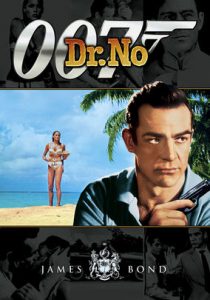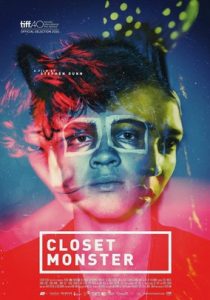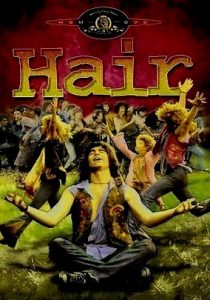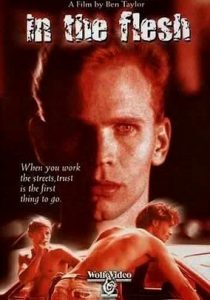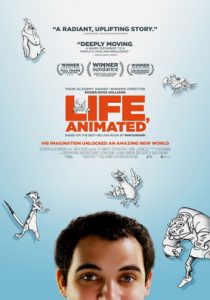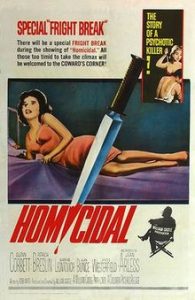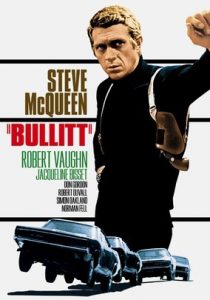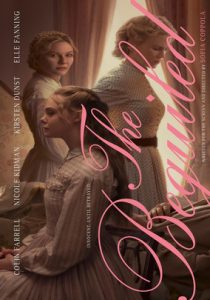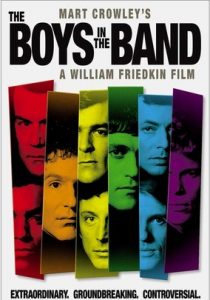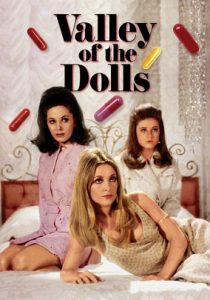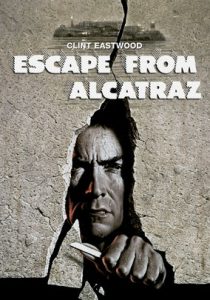Dr. No-1962
Director Terence Young
Starring Sean Connery, Ursula Andress
Scott’s Review #667
Reviewed July 27, 2017
Grade: A-
Watching the 1962 film that launched the James Bond franchise into the legendary status that it has since become, Dr. No is rich in history and is a blueprint of what the Bond films would encompass in the decades to follow.
Admittedly more basic in comparison to the more sophisticated and fleshed-out chapters to come, the film is nonetheless a superb entry in the franchise and a chapter to be cherished on its own merits.
Charismatic Sean Connery, soon to forever be identified in the role of James Bond, fills the role with a suave, masculine, confidence oozing from the screen in every scene. Hiss’s performance in the role is so seamless, that one might assume he had been playing Bond for years, rather than being a novice.
And who can forget the character’s first entrance- in a casino, confidently gambling, and introducing himself to Sylvia Trench, a character originally slated to be his steady girlfriend?
The film version of Dr. No is adapted from the first Ian Fleming spy novel of the same name, which is clever. As the years have gone by, the Bond films were modified a great deal from the originally written pages, so it is cool and original to have the film closely mirror the book.
Lacking a hefty budget, the action mainly takes place in both London and Jamaica and at Crab Key, a fictional island off of Jamaica.
When Strangways, a British Intelligence Chief, is killed and his body taken by assassins known as “the Three Blind Mice”, who also steal files related to Crab Key island, and a mysterious man named “Dr. No”, Bond is summoned to his superior’s (M) office in London and tasked with determining whether the incident has anything to do with radio interference of missiles launching in Cape Canaveral.
Naturally, it does and the adventure sets off a series of dramatic events involving henchmen, scrapes with death, and Bond’s bedding of more than one beautiful woman, before facing the ultimate showdown with the creepy title character., who is missing both hands.
Notable and distinguishable to the film are the fabulous, chirpy, child-like songs featured in the film. From the tuneful, harmonic, nursery rhyme, “Three Blind Mice”, sung calypso style, to the sexy and playful, “Under the Mango Tree”, both are light, yet filled with necessary mystery too.
The fact that the former is featured at the beginning of the film and implies that the same villains are joyfully singing the happy tune, is a good indicator.
Dr. No is also inspired by the introduction of the crime organization, SPECTRE, which any Bond aficionado knows very well is a staple of the franchise.
Joseph Wiseman, like Dr. No, is well cast, though sadly, we only see him in the latter part of the film. Much more character potential is left untouched, though the mystique of knowing the man exists, but not what he looks like is worth mentioning.
Admittedly, rather silly is the assumption that the audience will not be witty enough to realize that both the characters of Dr. No and Miss Taro (a villainous secretary) are Caucasian actors wearing unconvincing makeup.
Why the choice was made not to cast authentically ethnic actors is unclear. My guess is the powers that be wanted to go a safer route due to the uncertainty of the franchise at that time.
Still, for a first try, Dr. No gets it just about right.
What woman in 1962 was sexier or cast more perfectly than Ursula Andress as the gorgeous and fiery sex kitten, Honey Ryder? This casting was spot on and who can forget her sultry introduction to the film as she emerges from the roaring waves on the beach in a scantily clad bathing suit?
The set designs and locales also work well in the film. Contemporary is the set pieces, specifically the spacious prison apartment Bond and Honey briefly reside in. Sleek and sophisticated, the sofa, rug, and tables all exude luxury and class.
Dr. No (1962) is a worthy film on its own merits and a fantastic introduction to the world of James Bond and the many trademark elements and nuances that the films contain.
